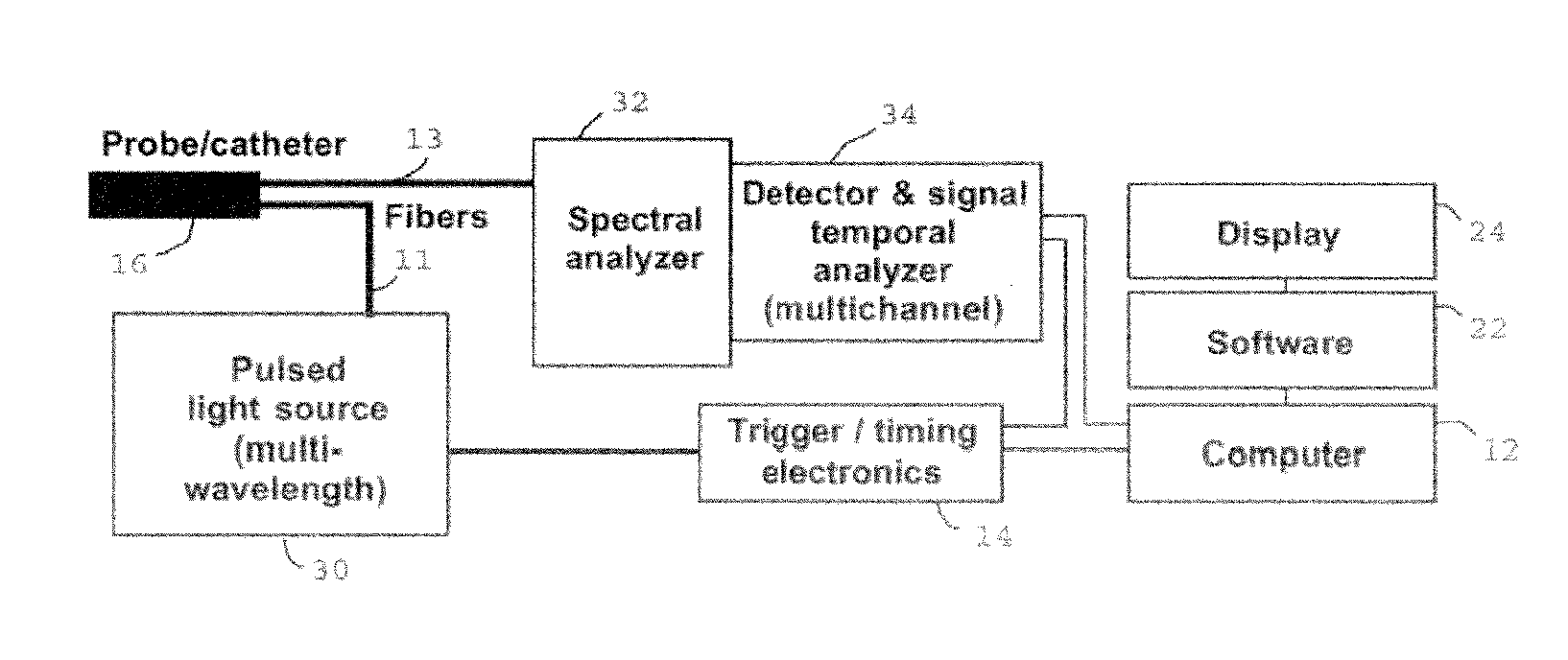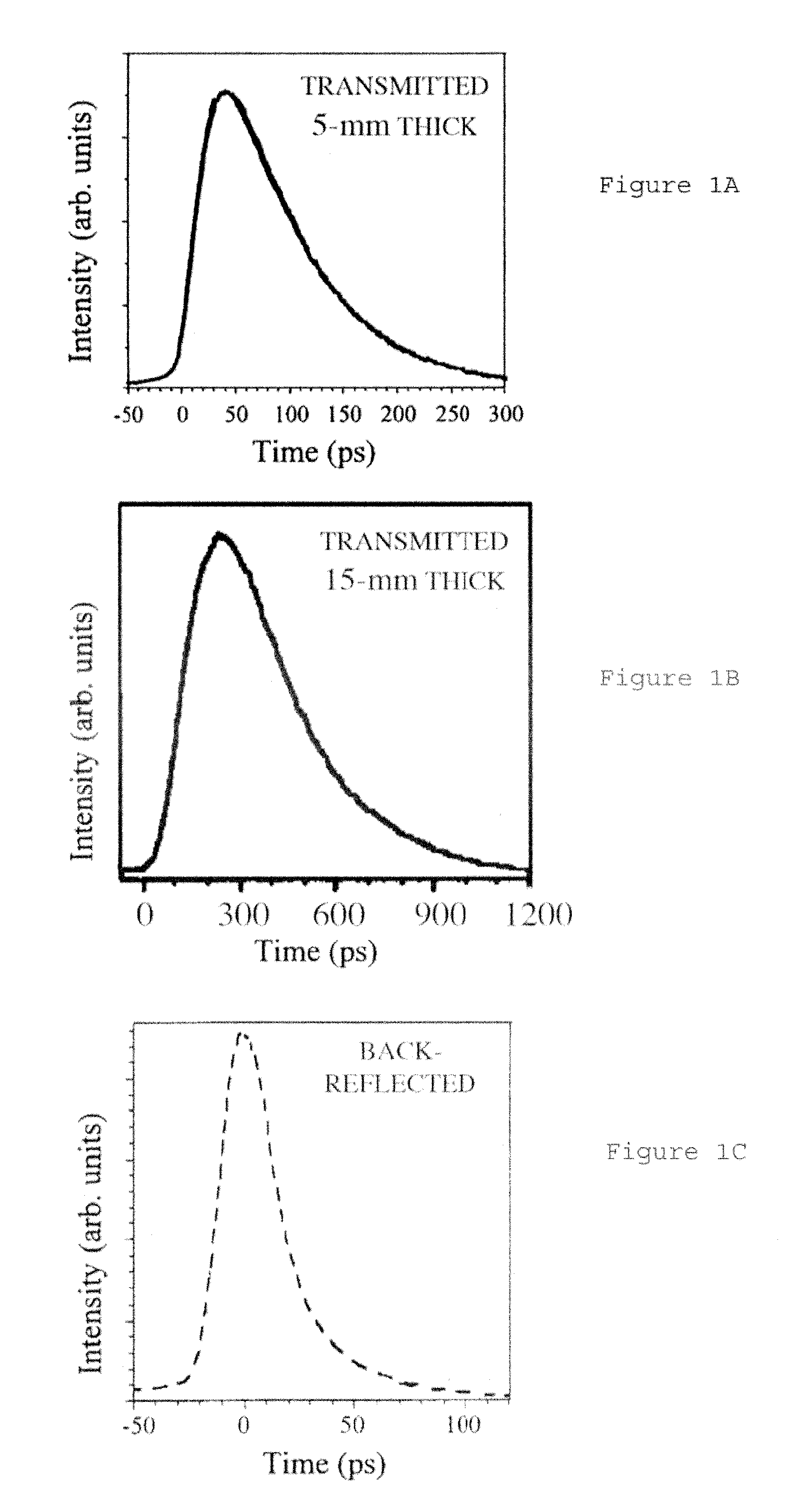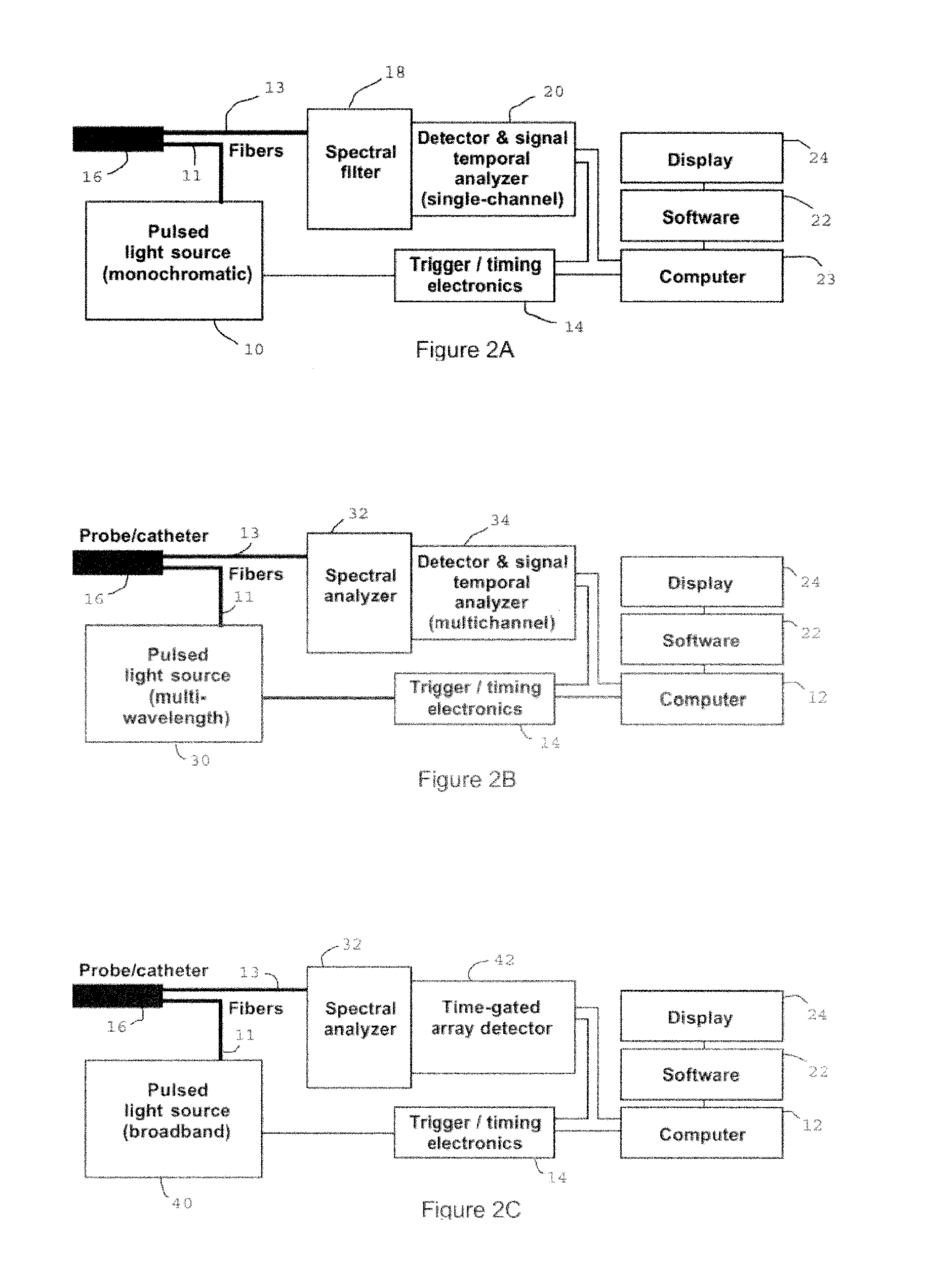Assessment of tissue or lesion depth using temporally resolved light scattering spectroscopy
a technology of light scattering and tissue depth, which is applied in the field of optical interrogation configuration, can solve the problems of limiting the ability to characterize the depth, contributing to the observed “noise” in the data, and all signals arriving earlier than about 45 ps contain no useful information, etc., and achieves the cost of implementing this invention, fast response time, and rapid reduction of costs.
- Summary
- Abstract
- Description
- Claims
- Application Information
AI Technical Summary
Benefits of technology
Problems solved by technology
Method used
Image
Examples
Embodiment Construction
[0032]The present invention teaches a different method to assess the lesion spatial parameters in real time with higher precision, especially of deeper ablation lesions. The present method can use the same catheter designs as in the parent case, incorporating optical elements in the tip of the catheter (most commonly in the form of one or more emitting and one or more receiving optical fibers). A schematic of the ablation catheter incorporating optical fibers in an arrangement that is suitable for the current invention is shown in FIGS. 2(a) and 2(b) of the parent case. The present method can also use the ejection of light into the tissue as in the parent case, e.g.; however, while the parent application teaches a method that uses the spectral profile of the receive light in order to assess the lesion depth, the present invention uses the temporal profile of the received light pulse in order to assess the lesion depth.
[0033]FIGS. 1A-1C show experimental measurements that represent t...
PUM
 Login to View More
Login to View More Abstract
Description
Claims
Application Information
 Login to View More
Login to View More - R&D
- Intellectual Property
- Life Sciences
- Materials
- Tech Scout
- Unparalleled Data Quality
- Higher Quality Content
- 60% Fewer Hallucinations
Browse by: Latest US Patents, China's latest patents, Technical Efficacy Thesaurus, Application Domain, Technology Topic, Popular Technical Reports.
© 2025 PatSnap. All rights reserved.Legal|Privacy policy|Modern Slavery Act Transparency Statement|Sitemap|About US| Contact US: help@patsnap.com



